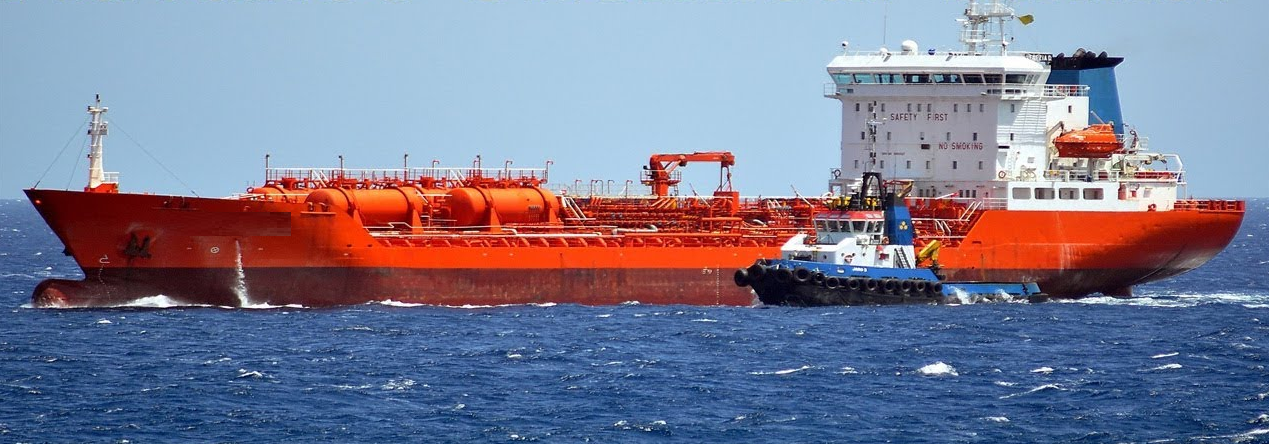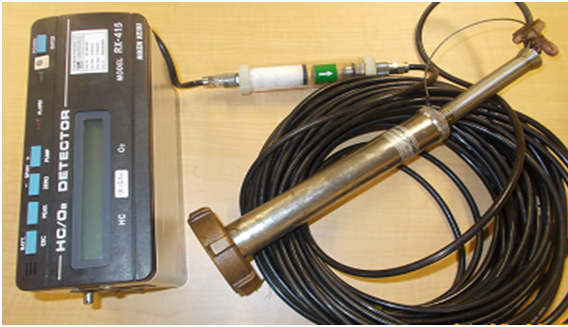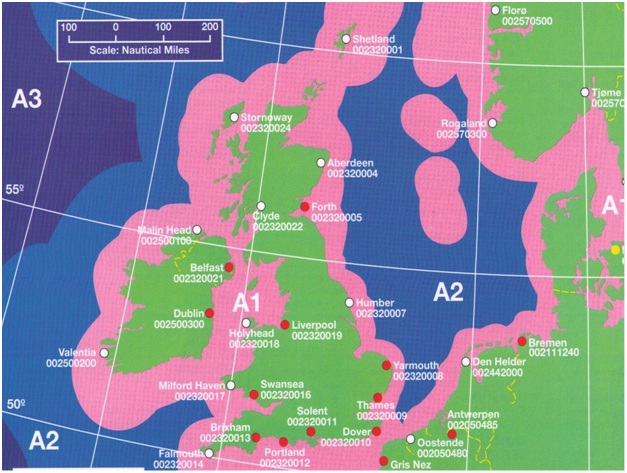CHEMICALS AND TYPES OF LIQUID CARGOES
Tanker vessel capable of carrying liquid cargoes can be subdivided (as a rule based on material chemical property) into a few major groups.
Acid:-
Any chemical compound containing hydrogen capable of being replaced by positive elements or radicals to form salts are usually corrosive.
Alcohol:
Organic compound containing one or more hydroxyl (OH) element, Alcohol may be mono-, di-, tri-, etc according to the number of hydroxyl elements they contain and primary, secondary or tertiary according to the position of the elements.
Aldehyde:
A group of organic compounds holding a position between alcohol’s and acids. They are produced by the oxidation of hydrocarbons and can be used for the production of alcohols such as acetaldehyde.
Aliphatic:
Organic compounds in which the carbon atoms are not arranged in a ring structure are called Aliphatic.
Alkali:
A strong base; a substance whose water solution yields a great volume of hydroxyl ions are usually corrosive.
Amine:
Substance derived from ammonia where hydrogen atoms are replaced by one, two or three alkyl groups.
Animal oil:
An oil material obtained from animal substances.
Aromatics:
Aromatic hydrocarbon (benzene series) =, with a carbon ring as the nucleus, e.g. aniline, naphthalene, benzene, toluene, xylene.
Carbohydrates:
Any one group of a compound composed of carbon, hydrogen and oxygen. They are neutral compounds comprising of sugars, starches cellulose’s, pent sans, gala tans etc.
Chlorinated Hydrocarbon:
Chlorinated Hydrocarbon is a type of halogenated hydrocarbons, which have undergone a substitution process whereby single atoms of hydrogen are replaced by single atoms of chlorine.
Crude oil: Rough or unfinished or unrefined oil.
Esters:
Organic compounds (salts) formed from an alcohol (base) and an organic acid. Many esters occur in nature, as fats or for instance, many as important as solvents.
Ether:
Ether is an organic oxide containing one or more kinds of hydrocarbon elements such as diethyl ether.
Fatty acids:
It is an organic monobasic aliphatic acid. Palmitic, stearic and oleic acids are the three acids occurring most frequently in fats as glycerol esters. Fatty acids are common in animal and vegetable tissue.
Glycols:
Aliphatic secondary alcohol compounds containing 2 OH groups e.g. ethylene glycol, a colourless liquid produced from ethylene oxide.
Halogenated Hydrocarbons:
Hydrocarbons that are the products of a substitution process whereby single atoms of hydrogen are replaced by single atoms of one of the halogens, i.e. fluorine, chlorine, bromine, iodine.
Heavy chemicals:
These are manufactured industrially on a very large scale (e.g. sulphuric acid, caustic soda), but not including petrochemicals.
Hydrogenation:
The process of introducing hydrogen into the molecules of a substance, usually with the aid of a catalyst called Hydrogenation. The conversion of carbon monoxide to methanol is an example as is the hydrogenation of vegetable oils to produce fats.
Hygroscopic:
A hygroscopic compound is one which absorbs moisture when exposed to air but does not become wet.
Ketones:
A class of organic compounds produced by oxidation of secondary alcohol’s and characterised by the carbonyl group (CO), e.g. acetone, methyl ethyl ketone.
Mineral acids:
Mineral acids are the inorganic acids the commonest of which are hydrochloric, nitric and sulphuric.
Orimulsion:
It is natural bitumen in a water emulsion stabilised with a surfacient package.
Petroleum Product: A liquid hydrocarbon product derived from crude oil.
Solvent:
The name given to products in the chemical industry which are used for dissolving other substance, e.g. acetone, alcohol’s, glycol’s, benzene, naphtha, carbon tetrachloride, carbon disulphide, turpentine, cyclohexanol, toluene, xylene.
Vegetable oil:
Any oil of plant origin, usually the cola tile (essential) oils are not included in this classification which is primarily intended to designate the fixed oils (i.e. glycerol esters of various fatty acids).
Flash Point:
The flash point of a liquid is the lowest temperature at which the liquid will give off vapour to form a flammable gas mixture with air, near the surface of the liquid.
Auto Ignition Temperature:
The auto ignition temperature of a solid, liquid or gas is the lowest temperature at which it requires to be raised to support self initiated combustion.
Flammable/Explosive Limits:
The flammable (explosive) limits are the minimum and maximum concentrations of flammable gas or vapour in air between which ignition can occur.
- The minimum vapour concentration is known as:-
- Lower Flammable Limit (LFL)
- Lower Explosive Limit (LEL)
- The maximum vapour concentration is known as:-
- The Upper Flammable Limit
- The Upper Explosive Limit
Vapour Pressure:
Vapour Pressure is an indication of the tendency of a liquid to vaporize. If a liquid is put in a closed container at a constant temperature, a pressure will be exerted which will reach an equilibrium value, known as the Vapour Pressure of the liquid at that temperature.
Boiling Point:
The Boiling Point of a liquid is the temperature at which its vapour pressure equals the surrounding atmospheric pressure at which point the liquid vaporizes. Always remember that cargo being loaded should not exceed the safe working pressure and that cargo should not be loaded at or near their boiling points.
Vapour Density:
Density is the mass of a substance in unit volume. The densities of hydrocarbon vapours are normally greater than air or inert gas thus the possibility of “layering” of gases has to be taken into account during cargo operations.
Water Solubility:
The solubility of a substance in water, at a specified temperature is the maximum weight of the substance which will dissolve in a given weight of water. In the case of a liquid dissolving in, another liquid the term “musclebility” is used instead of “solubility”. Solubility information is useful in determining cleanup matters for spills and the fire extinguishing methods for liquid cargoes e.g.
A cargo which is soluble in water is likely to destroy normal fire fighting foam. A cargo which is insoluble in water will form a separate layer above or below the water layer dependent on its specific gravity.
When the specific gravity of the cargo is high a layer of cargo should always be suspended beneath the water which may result in hazardous vapour being released when the layers are distributed.
Melting/Freezing Point:
The temperature at which the liquid state of a material is in equilibrium with a solid state, i.e. at a high temperature the solid will melt and at a lower temperature the liquid will solidify. Freezing point and melting point may not always be coincidence, but they are sufficiently close to enable the difference between them to be ignored for the purpose of cargo handling.
Pour Point: The Pour Point of a liquid is the lowest temperature at which the liquid will flow. It should be noted that oil with thixotropic properties (the properties of showing a temporary reduction in viscosity when shaken or stirred) can be pumped at temperatures well below its pour point, but at very restricted rates.
Viscosity:
Viscosity is a measure of liquid’s ability to flow and is usually determined by measuring the time required for a fixed volume to flow under gravity through a thin tube at a fixed temperature. As the temperature of the liquid increases its viscosity decreases and therefore it flows more readily. It can also be described as a measure of the internal friction of a liquid.
The distinction between viscosity and pour point should be made clear. Oil ceases to flow below its pour point temperature when the wax content solidifies. A viscosity measurement of a liquid depends upon the internal resistance of the liquid to flow. For a simple liquid this internal resistance varies with the temperature in a predictable and regular way. However, when oil approaches its pour point, the rate at which viscosity increases as temperature falls accelerates until sufficient wax has precipitated to solidify the product.
Viscosity is important as regards the pump ability of a product. Centrifugal and deep well pumps are acceptable for the majority of cargoes but high-viscosity products such as bitumen or molasses are more suited for pumping with positive displacement pumps.
Cloud Points:
The Cloud Point of a crude oil is the temperature at which wax crystals begin to come out of solution, as the temperature is lowered. It is therefore an important factor when the heating requirement for crude oils in transit and during discharge is considered.
Hydrocarbon Gases:
In general TLV of petroleum gases is 300 ppm which approximately corresponds to 2% of Low Explosive Limit (LEL) however; this TLV must not be applied on gas mixture containing benzene, toluene or hydrogen sulphide.
Aromatic Hydrocarbons:
Aromatic Hydrocarbons include benzene, toluene and xylene. They are components in varying amounts in many typical petroleum and chemical cargoes.
TLV of an aromatic hydrocarbon is generally less than that of other hydrocarbons. Repeated exposure of benzene may produce serious chronic effects which can lead to disorder of the blood and bone marrow. Personnel engaged in such operations involving products listed above, especially benzene should therefore follow the precautions described in the ISGOTT in order to avoid harmful exposure during any cargo handling operations.



